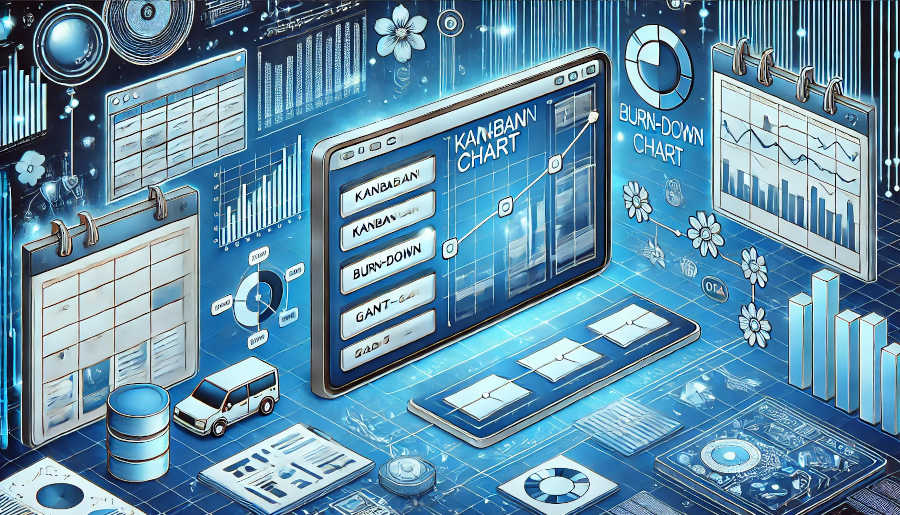In the Integrated Product Development (IPD) process, ensuring on - time delivery of projects is of utmost importance. It not only impacts the company's reputation in the market but also has significant implications for customer satisfaction, cost control, and overall business success. Delays in project delivery can lead to missed market opportunities, increased costs due to extended timelines, and potential loss of customers to competitors.
The IPD process is a comprehensive approach that integrates various functions such as marketing, R&D, engineering, manufacturing, and sales from the very beginning of a project. This holistic approach aims to create products that meet customer needs efficiently. However, with the complexity involved in coordinating multiple teams and activities across different stages of IPD, achieving on - time delivery can be a challenging task. Understanding the key factors and implementing effective strategies at each stage of the IPD process is crucial for ensuring projects are completed within the stipulated timeframes.
Stage 1: Concept Definition
The concept definition stage sets the foundation for the entire project. It is during this stage that the project scope, customer requirements, and initial product concepts are defined. A clear and well - defined scope is essential for on - time delivery. If the scope is ambiguous or constantly changing, it can lead to misunderstandings among team members, rework, and ultimately delays.
To ensure a clear scope, cross - functional teams should collaborate closely. Marketing teams need to accurately identify customer needs and translate them into product requirements. R&D and engineering teams, on the other hand, should assess the technical feasibility of these requirements. By involving all relevant parties from the start, potential issues can be identified early, and a more realistic project plan can be developed.
Moreover, setting up a proper change management process during the concept definition stage is vital. As new information may emerge, there may be a need to modify the project scope. However, any changes should be carefully evaluated in terms of their impact on the project timeline, resources, and budget. A formal change request process, where changes are documented, analyzed, and approved by relevant stakeholders, helps in maintaining control over the project and ensuring that it stays on track for timely delivery.
Stage 2: Planning
The planning stage is where the project roadmap is laid out in detail. This includes defining tasks, setting milestones, allocating resources, and creating a project schedule. A well - structured project plan serves as a guide for the entire project team, enabling them to understand their roles and responsibilities and the sequence of activities.
When defining tasks, it is important to break them down into manageable units. This allows for more accurate estimation of time and resources required. For example, instead of having a broad task like "Develop the product prototype," it can be broken down into smaller tasks such as "Design the prototype," "Source materials," and "Assemble the prototype." This level of detail helps in better resource allocation and scheduling.
Resource allocation is another critical aspect of planning. Ensuring that the right people with the appropriate skills are assigned to each task at the right time is essential. If there is a shortage of key resources or if resources are over - committed, it can lead to delays. Additionally, contingency plans should be in place for unforeseen resource issues, such as the sudden unavailability of a key team member. By carefully planning resource allocation and having backup plans, the project can stay on schedule.
Stage 3: Development
The development stage is where the actual product is created. This involves activities such as product design, engineering, and software development. During this stage, effective communication and collaboration among different teams are crucial for on - time delivery.
Cross - functional teams need to work together seamlessly. For example, the R&D team may be developing the product's core technology, while the manufacturing team is working on the production process. Regular communication channels should be established to share information, address any issues promptly, and ensure that the product development aligns with the manufacturing requirements. This helps in avoiding last - minute changes and delays that can occur when there is a lack of coordination.

In addition, quality control measures should be implemented throughout the development stage. Conducting regular reviews and tests at various intervals helps in identifying and rectifying any quality issues early. If quality problems are left undetected until the later stages of development, it can lead to significant rework, which will undoubtedly delay the project. By building quality into the development process from the start, the project can progress smoothly towards on - time delivery.
Stage 4: Testing and Validation
The testing and validation stage is crucial for ensuring that the product meets the defined requirements. This stage involves various types of tests, such as functional testing, performance testing, and user acceptance testing. Adequate time should be allocated for testing to ensure that all aspects of the product are thoroughly evaluated.
A well - planned testing strategy is essential. This includes defining the test cases, test scenarios, and the expected results. By having a clear testing plan, the testing process can be carried out efficiently. Moreover, early involvement of the testing team in the project can help in identifying potential testability issues during the development stage itself. This allows for corrective actions to be taken in a timely manner, reducing the risk of delays during the testing phase.
During the testing and validation stage, it is also important to manage any issues or bugs that are identified. A proper defect tracking system should be in place to record, prioritize, and assign the bugs for resolution. The development team should then work quickly to fix the issues and ensure that the product meets the required quality standards. By effectively managing the testing and validation process, the project can move forward towards successful and on - time delivery.
Stage 5: Launch and Commercialization
The launch and commercialization stage is the culmination of the entire IPD process. At this stage, the product is introduced to the market, and marketing and sales efforts are ramped up. To ensure on - time launch, all the previous stages should have been completed successfully.
Pre - launch activities need to be carefully coordinated. This includes finalizing the marketing materials, training the sales team, and setting up the distribution channels. Any delays in these activities can push back the product launch. For example, if the marketing materials are not ready on time, the sales team may not be able to effectively promote the product, resulting in a delay in market entry.
Once the product is launched, continuous monitoring and feedback collection are important. This helps in quickly addressing any post - launch issues and making necessary adjustments. By having a smooth launch and commercialization process, the project can achieve its goal of timely delivery to the market, enabling the company to start reaping the benefits of the product investment.
Conclusion
Ensuring on - time delivery of projects in the IPD process stages is a complex but achievable goal. By focusing on key aspects at each stage, from concept definition to launch and commercialization, companies can increase the likelihood of successful project delivery within the planned timeframes.
At the concept definition stage, clear scope definition and a proper change management process lay the groundwork. The planning stage requires a detailed project plan, accurate task definition, and effective resource allocation. During development, seamless cross - functional collaboration and quality control are essential. The testing and validation stage demands a well - planned testing strategy and efficient defect management. And finally, the launch and commercialization stage needs careful coordination of pre - launch activities and continuous post - launch monitoring.
By implementing these strategies and maintaining a focus on on - time delivery throughout the IPD process, companies can not only improve their project management capabilities but also gain a competitive edge in the market. Timely delivery of products helps in meeting customer expectations, enhancing brand reputation, and ultimately driving business growth. It is an ongoing process that requires continuous improvement and adaptation to changing market conditions and project requirements.
ARTICLE TITLE :How to ensure on-time delivery of projects in the IPD process stages ,AUTHOR :ITpmlib

















